 Of all the fashion accessories of the 1950s—Ray-Ban sunglasses, Pucci scarves, Eisenberg cocktail rings—none were more dazzling than Lucite handbags. These geometric gems, which in retrospect seem to anticipate the exuberance of the 1960s, were like portable jewel boxes turned inside out, in hues that ranged from basic black to pretty pastels to clear. Some purses were made of laminated Lucite, sealing butterflies, raffia, and multi-colored confetti within their rigid plastic sides. Others were studded with rhinestones, or even hand carved, using techniques handed down from the ivory trade.
Of all the fashion accessories of the 1950s—Ray-Ban sunglasses, Pucci scarves, Eisenberg cocktail rings—none were more dazzling than Lucite handbags. These geometric gems, which in retrospect seem to anticipate the exuberance of the 1960s, were like portable jewel boxes turned inside out, in hues that ranged from basic black to pretty pastels to clear. Some purses were made of laminated Lucite, sealing butterflies, raffia, and multi-colored confetti within their rigid plastic sides. Others were studded with rhinestones, or even hand carved, using techniques handed down from the ivory trade.
“Hmm… old Wilardy inventory, that was certainly an offer I was not going to refuse.”
One of the foremost authorities on Lucite handbags is Janice Berkson, proprietor of a vintage jewelry and handbag shop called Deco Jewels in New York City. Her book, “Carry me! 1950’s Lucite Handbags an American Fashion,” published by ACC Editions, with eye-popping photographs by John Bigelow Taylor, is an invaluable guide to this art form.
Berkson has had her own invaluable guides to hard-plastic purses. The first is writer and editor Robert Gottlieb, whose “A Certain Style, the Art of the Plastic Handbag, 1949 – 1959” was written with Frank Maresca and published by Knopf in 1988. Gottlieb and Maresca’s book kindled Berkson’s love affair with Lucite.
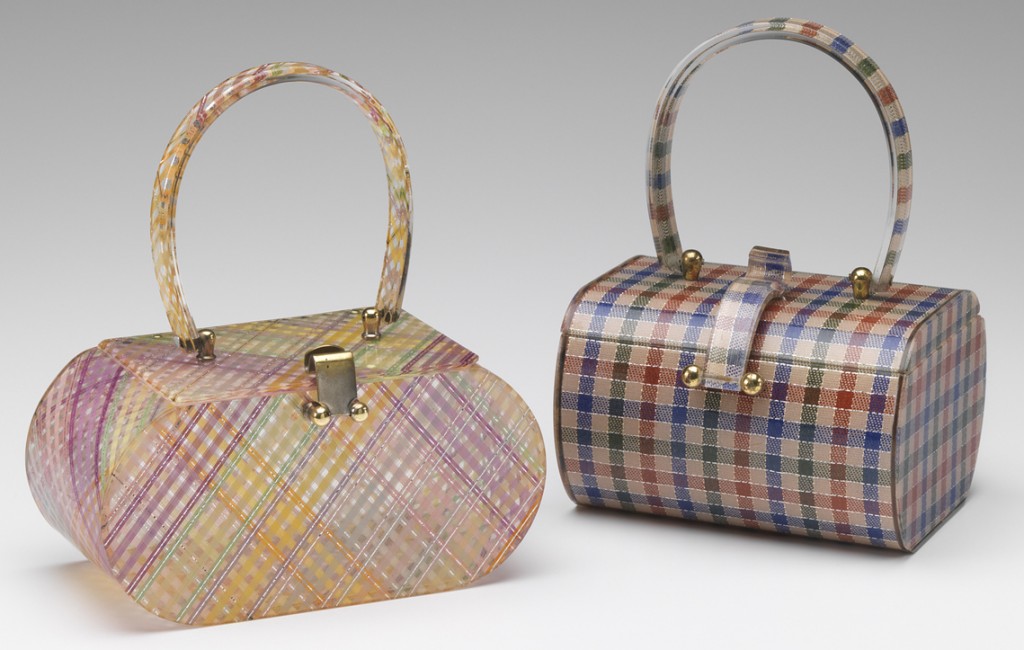
Above, a pair of laminated Lucite handbags by Wilardy (style #876 on the left, #750 on the right). At top, a Tiger clutch, lunchbox purse, and lipstick holder, also by Wilardy.
“If you know Bob Gottlieb,” says Berkson, who does, “you know he has a keen eye and loves buying quirky and unusual items. I believe it was around 1980 when Bob found and purchased his first bag at an antiques store. He thought it was such a bizarre object, but as time went on and he found other equally bizarre styles, he became hooked and his collection was born.”
The other mentor is Will Hardy, the man behind Wilardy handbags. Berkson’s introduction to Hardy came completely out of the blue when, in 1995, he called her at her store. “He asked if I would like to visit him on the Cape to look at a collection of his handbags that he wished to sell,” Berkson writes. “Hmm… old Wilardy inventory, that was certainly an offer I was not going to refuse.” Berkson doesn’t remember how many handbags she bought from Will Hardy that day (in her book she allows that it emptied her bank account), but she can say that in the years since, she has “purchased everything he was willing to part with.”

Llewellyn was known for its carved Lucite bags, as well as ones like this one made from shell, a hard plastic material composed of cellulose acetate.
By 1995, Berkson knew what she was looking at. She knew, for example, that Hardy had first used Lucite in handbags while working for his father. His materials were salvaged from the damaged nose cones of airplanes that had been scrapped after World War II.
Wilardy was not the only company working with Lucite. Associated Plastics, which made “shell” frames for handbags in 1946, soon began making handbags entirely of “plastic” under the name “Gilli Originals.” Another New York company, Maxim, was advertising its Lucite handbags as early as 1947. These rectangular bags were made in shell, butterscotch, white, and black.

Vanity purses laminated with colored or gold glitter, such as these examples from Wilardy, were popular throughout the 1950s.
Alert readers may have noticed the repetition of the word “shell,” which, says Berkson, usually “refers to the tortoise- or caramel-colored hard plastic material made of cellulose acetate.” In some cases, though, shell is also used to describe the tortoiseshell color of a Lucite bag. “Lucite,” says Berkson, “is DuPont’s trade name for an acrylic resin. I do not know if DuPont originally marketed their material specifically to handbag manufacturers, but once the handbags became popular, DuPont expanded their line making special colors and laminates.”
One of the most inventive of the early Lucite handbag makers was Llewellyn Bley, whose bags were carved to create Art Deco angled stripes or organic Art Nouveau designs. Llewellyn embellished its globe, basket, and pagoda-shaped bags with gold filigree, while one of its most famous bags, the Beehive, featured a lid adorned with a trio of brass bees.
Llewellyn also produced hard bags that seemed to be soft, such as the inverted-fan-shaped bag that sits on clear ball feet and whose sides appear to be pleated. Llewellyn’s Conestoga Wagon purse resembles a duffle bag that is taller at either end where it’s attached to a pair of twisted strap-like handles.
Other manufacturers went absolutely nuts with color. Wilardy made handbags that glowed green or lavender in the dark. Charles S. Kahn of Florida produced bags in the shapes of hat boxes, barrels, drums, and cylinders in emerald, cobalt, cranberry, raspberry, and gold satin-finish Lucite. Myles Originals, also of Florida, used a material called Lamoplex to create a crushed-crayons effect.
In addition to working with Lucite, Florida manufacturers were able to construct bags of cellulose nitrate, a plastic material that was illegal in New York because of its high flammability. This alternative to Lucite was used by Miami Handbag Mfg., Inc. in its Patricia of Miami and Bag By Benné lines—as if to prove New York safety laws correct, a worker using a dull electric saw on a brand of cellulose nitrate called Everplex started a fire that destroyed the plant.
But the effects Lucite handbags are perhaps best known for were achieved by lamination. “In my opinion, Wilardy did that best,” says Berkson. Silver, gold, or multi-colored confetti and stars were favorite fillings to sprinkle between sheets of clear Lucite, as were gold and silver threads, which gave the bags an almost fabric-like appearance. Basket-weave fabric also softened hard edges, as did pastel plaids.

Wiesner made rhinestone-trimmed “birdcage” bags in black and clear. The clear one reveals the matching accessories within.
Some bags featured rounded see-through coffin-like lids with faux flowers inside. Other lids styles were designed to hold compacts, cigarette cases, and lipstick holders. And the shapes! There were triangles, parallelograms, hat boxes, convertible clutches, and accordions, in double- and triple-decker models, a specialty of Wilardy. Many of the Florida manufacturers secured their bags with a three-ball clasp, whose components were plated with 24k gold. By any measure, these were some pretty fancy handbags.
“Some of them were meant for special occasions,” says Berkson, “but others were designed as day bags. I have several go-to bags that I wear all the time during the day. For example, I have one Wilardy bag in four or five different colors. It’s a nice shape, easy to carry, with a mirror in the lid, and it’s large enough to hold my wallet, makeup, keys, cell phone, sunglasses, and all my other essentials. Most of them have rhinestones around the base of the handle and on the clasp, but I still consider it a day bag.”

Basket-weave fabric was a favorite Lucite laminate. The bag on the left is by Charles Foster, the clutch on the right is from Wilardy.
From a fashion perspective, Berkson likes the effect a Lucite bag can have on the rest of one’s outfit. “When you go to a restaurant, it doesn’t matter what you’re wearing. If you’re carrying one of these bags, it’s what people are going to notice. That’s the beauty of them. You walk into a room and you know people are looking at you, and you can’t help but smile.”
And what about the clear bags? Weren’t women squeamish about walking around with a purse that revealed its contents? “Women would put a scarf inside their clear bags, and then put their stuff inside the scarf,” she says. “They’d change their scarf to match their outfit. And because the handbags were made by hand (and were expensive), a woman theoretically only needed one handbag, not that any woman today would admit to only needing one handbag,” says Berkson. “In the 1950s, that was a big selling point, and explains why the clear bags were popular. Other clear bags, like some made by Wiesner, could be purchased with matching accessories.”

In the 1950s, women would change the appearance of their clear Lucite purses by simply changing the scarf they tossed in the bag to hide its contents from view.
By 1960, handbag manufacturers had discovered another type of plastic, vinyl, which was easier and less expensive to work with. Almost overnight, the fad of Lucite handbags appeared to be just that, and these hard-sided handbags languished in thrift stores and vintage shops, until Robert Gottlieb almost “single-handedly resurrected the Lucite handbag as a fashion icon.”
For Berkson, Lucite bags of the 1950s remain endlessly enticing, and the fact that they are eye-catching doesn’t hurt their appeal. “I love rhinestones,” she confesses, “I’m a glitter girl. Anything that sparkles makes me happy.”
(All photographs by John Bigelow Taylor, www.johnbigelowtaylor.com. To contact Janice Berkson, visit Deco Jewels at 131 Thompson Street, New York City; 212-253-1222. If you buy something through a link in this article, Collectors Weekly may get a share of the sale. Learn more.)


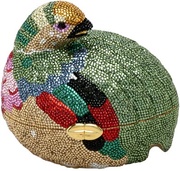
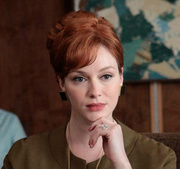 'Mad Men' Prop Master Scott Buckwald Explains How He Re-Creates the '60s
'Mad Men' Prop Master Scott Buckwald Explains How He Re-Creates the '60s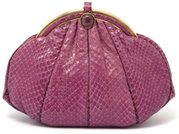
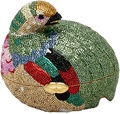 Purse Perfection: Judith Leiber on Faberge, Rhinestones, and Her Favorite First Ladies
Purse Perfection: Judith Leiber on Faberge, Rhinestones, and Her Favorite First Ladies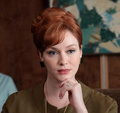 'Mad Men' Prop Master Scott Buckwald Explains How He Re-Creates the '60s
'Mad Men' Prop Master Scott Buckwald Explains How He Re-Creates the '60s Abigail Rutherford on the History of Vintage Handbags
Abigail Rutherford on the History of Vintage Handbags Handbags and PursesEven though purses have been around since the 16th century and bags known a…
Handbags and PursesEven though purses have been around since the 16th century and bags known a… BagsWhether it's the alligator briefcase your dad carried in the 1960s or the k…
BagsWhether it's the alligator briefcase your dad carried in the 1960s or the k… Mari Tepper: Laying it on the Line
Mari Tepper: Laying it on the Line Nice Ice: Valerie Hammond on the Genteel Charm of Vintage Canadian Costume Jewelry
Nice Ice: Valerie Hammond on the Genteel Charm of Vintage Canadian Costume Jewelry How Jim Heimann Got Crazy for California Architecture
How Jim Heimann Got Crazy for California Architecture Modernist Man: Jock Peters May Be the Most Influential Architect You've Never Heard Of
Modernist Man: Jock Peters May Be the Most Influential Architect You've Never Heard Of Meet Cute: Were Kokeshi Dolls the Models for Hello Kitty, Pokemon, and Be@rbrick?
Meet Cute: Were Kokeshi Dolls the Models for Hello Kitty, Pokemon, and Be@rbrick? When the King of Comedy Posters Set His Surreal Sights on the World of Rock 'n' Roll
When the King of Comedy Posters Set His Surreal Sights on the World of Rock 'n' Roll How One Artist Makes New Art From Old Coloring Books and Found Photos
How One Artist Makes New Art From Old Coloring Books and Found Photos Say Cheese! How Bad Photography Has Changed Our Definition of Good Pictures
Say Cheese! How Bad Photography Has Changed Our Definition of Good Pictures Middle Earthenware: One Family's Quest to Reclaim Its Place in British Pottery History
Middle Earthenware: One Family's Quest to Reclaim Its Place in British Pottery History Fancy Fowl: How an Evil Sea Captain and a Beloved Queen Made the World Crave KFC
Fancy Fowl: How an Evil Sea Captain and a Beloved Queen Made the World Crave KFC
Ben,
Thanks for the great article on lucite handbags. Reminded me of an earlier time in my life when I and other women actually carried them; mostly for dressey occasions.
Great writing. Hope to see more of the same
Willie
WOW! I want all of these most fab lucite beauties! Great article and thank you for sharing!
i would like to know how you get the plastic purses to shine like new??? they are all beautiful. thank you.
My guilty pleasure is lucite handbags…. I’m so in love
With them…. My collection is getting larger everyday :)
REMEMBER ROBERT PALMER’S SONG, “MIGHT AS WELL FACE IT YOU’RE ADDICTED TO LOVE” WELL MY SONG IS: “MIGHT AS WELL FACE IT YOU’RE ADDICTED TO LUCITE”, I LOOK ALL OVER THE INTERNET FOR COLORS PURPLE, AQUA, AND IF I COULD EVER FIND THAT HUNTER GREEN THAT THE QUIRKY FINDS LADY HAS, I’D BE IN HEAVEN. I JUST BOUGHT A BLUE AND A DARK GREEN BY MYLES (NOW I HAVE TWO MYLES). DON’T EVEN MENTION WIESNER BAGS, THEY ARE THE BOMB, LOVE THEM. DOES ANYONE KNOW WHERE TO FIND UNUSUAL ALL LUCITE BAGS? ANY STORES, THAT HAVE UNUSUAL COLORS. NOT ON THE INTERNET APPARENTLY, THEY ARE GETTING HARDR TO FIND!
My father was Morty Edelstein the designer and head of Patricia of Miami…..Patricia was my mom……as kids we used to wander the factory…..I still have some plastic items from that time…..we used to keep crayons and toys inside the purses……this is a great web site…..thanks for the info.
The Internet has ruined collecting these purses at any affordable prices. I used to be able to buy them for $7-10 back in the 80’s. but now I can’t afford to collect them anymore.
I have about 10 lucite hand bags I would like to store for a period of time. I would like advise on what is the best way to store them. Thanks Leisa.
Ben, thank you for providing such a GREAT site for fans of lucite purses!
A friend gave me a Wilardy (and two other lucite purses–I don’t remember the names) in the late 1970s. I hung on to the Wilardy, because it was the most beautiful one. I have been searching sites to find out what the name is of the model I have; I believe it is called a ‘Stardust’ pattern, but I have seen the same thing described as “Gold-Dust” and there is on similar called “Black Gold-Dust”. But the shape of mine is what you have marked as “#750”; do you know if that style has a particular name?
Mercy, respectfully, I must disagree with your post. I don’t think “the internet has ruined collecting these purses at any affordable prices.” I have seen some selling for under $75 (which is pretty great for an antique). I don’t think anyone can expect to pick one up for $7-10 anymore; the same thing goes with ANY collectables.
If anything, I think the internet (this site is a perfect example) has empowered the potential buyer/collector by giving them information that they may not have had. Additionally, through the internet one is able to find a purse that is incredibly hard to obtain. Will you have to pay more than $10 to buy one of these beauties? More than likely. Would you have been able to find one worth buying in the first place, if it were not for the internet? Probably not.
Thank you again, Ben!
What a wonderful article. Yes, Jan’s book is full of these and many more amazing photos. I’m always looking for these rarest of all Lucite bags. I have a huge collection of well over one hundred Lucite bags, as well as at least 400 other vintage purses. Some I’ll keep forever, but some are for sale on my website vintagepursepage.com.
Janice is a legend with respect to lucite purses and vintage jewelry. She has a strong sense for the unusual pieces and ultimately collectable treasures.
And if that wasn’t enough….she is an absolutely amazing person.
Don’t miss the opportunity to visit Deco Jewels in NYC…..you won’t be disappointed. If Janice is not available……Evan will be more than willing to help you find anything that you simply love. They both have a great deal of patience and want you to leave happy with your purchase.
Two of my favourite people in NYC!!!!!
My father Abraham Morris Federman worked for Patricia of Miami from around 1955-1960. My father could do just about anything when it came to a handbag. He had his own factory in NY, but it never succeeded. My father was trained in Warsaw, Poland in the late 1920’s
We moved from the Bronx in 1955 to Miami Beach, when my dad got a job with Morty Adelstein. I think Morty Adelstein was also my fathers best man, at the marriage of his first wife Pauline Markman in 1937. Pauline died in childbirth in 1938, and in 1940 my dad married my mother Ruth Korman. I guess my father lost his job when the plant burnt down.
I remember he then took a job with another handbag manufacturer Eli Rosenberg. Things did not work out and we moved back to NY in 1962.
I would love to have a contact email to Morty Edelsteis son, if he is still alive.
We might be able to share memories.
Hank Federman